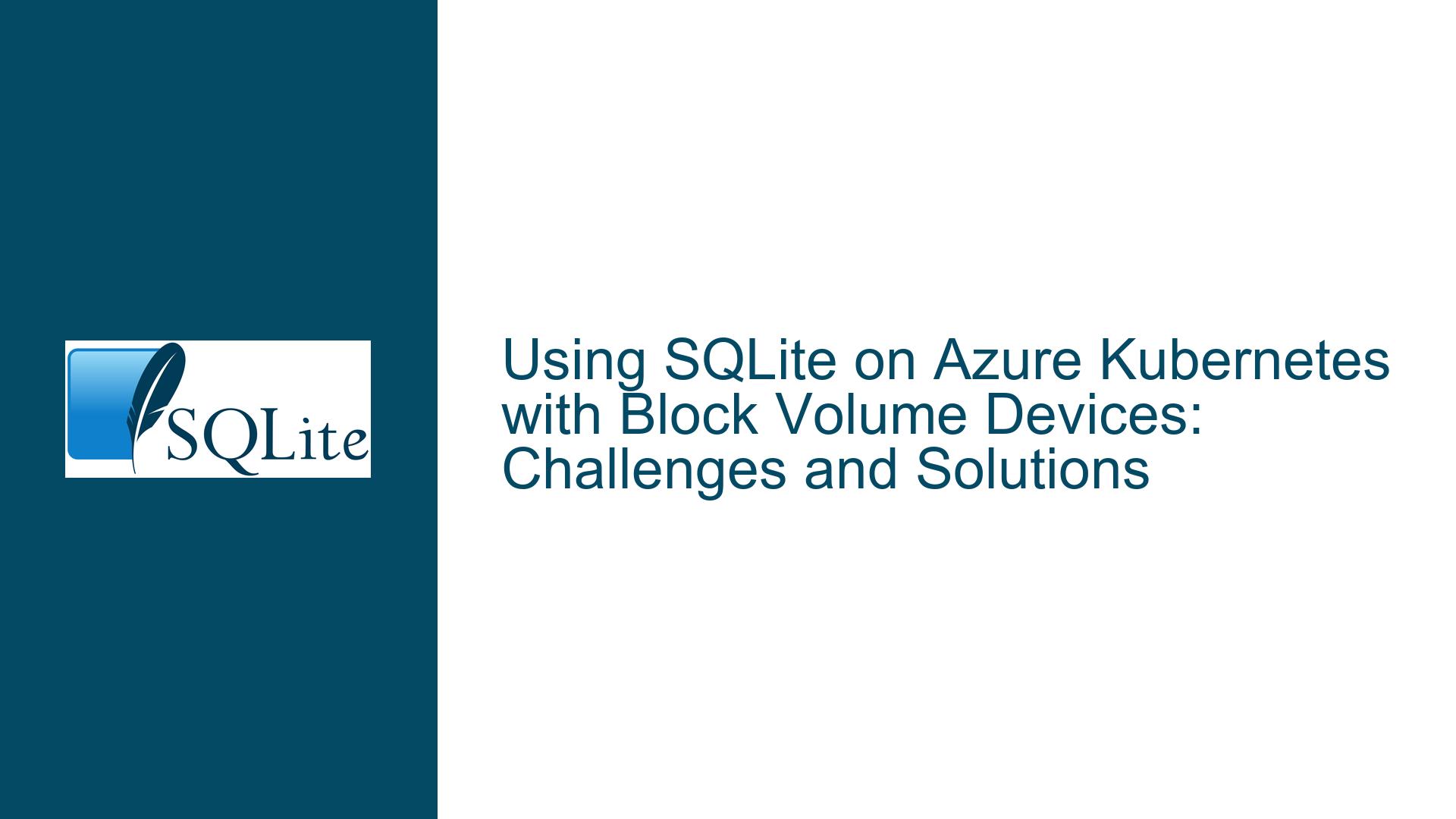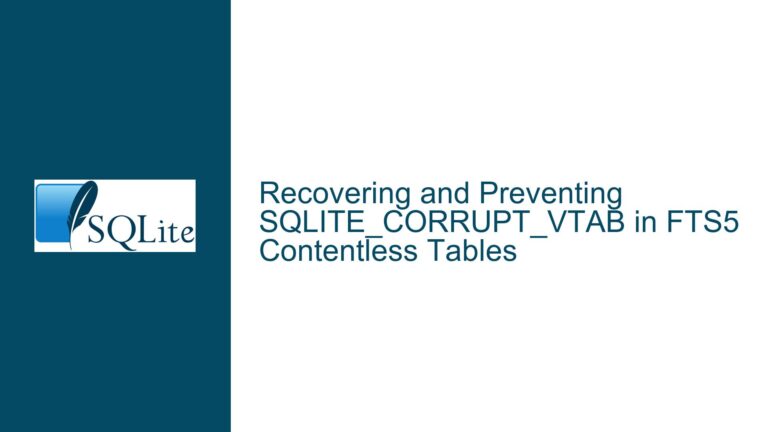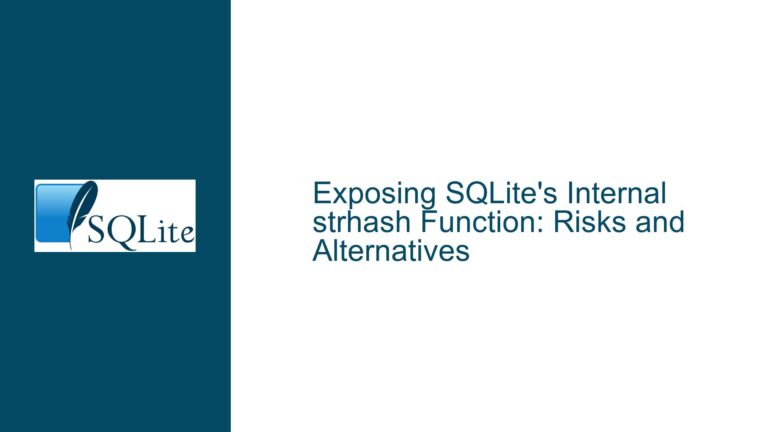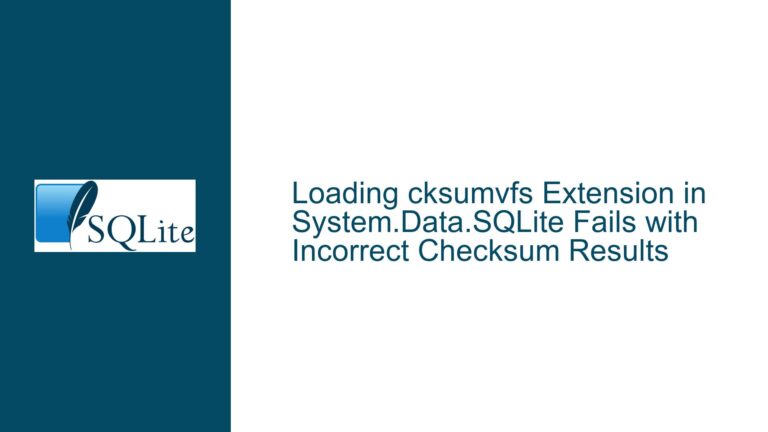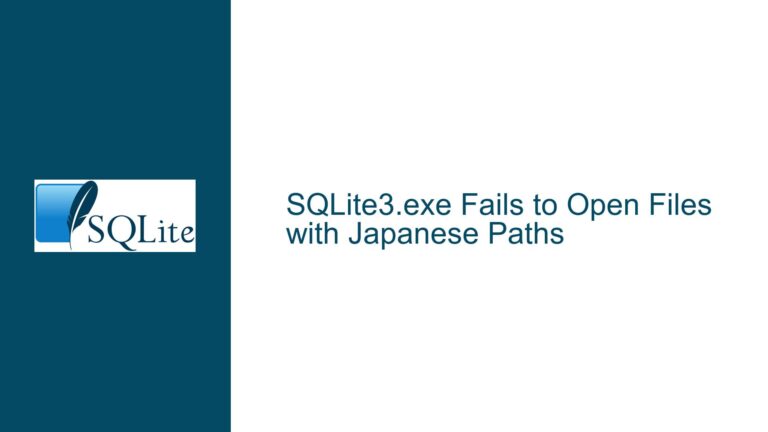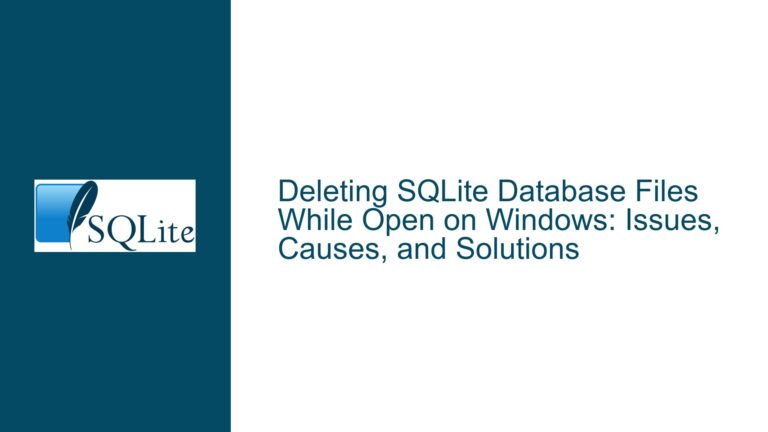Using SQLite on Azure Kubernetes with Block Volume Devices: Challenges and Solutions
Issue Overview: SQLite on Block Volume Devices in Azure Kubernetes
SQLite is a lightweight, serverless, and self-contained SQL database engine that is widely used for embedded systems, mobile applications, and small-scale web applications. However, its design assumes a traditional file system for storage, which presents challenges when attempting to use it with block volume devices, particularly in cloud environments like Azure Kubernetes Service (AKS). Block volume devices, unlike file systems, provide raw storage without built-in file management capabilities, requiring manual handling of block allocation, space management, and concurrency control.
The core issue revolves around the compatibility of SQLite with block volume devices, especially in a shared disk environment where multiple nodes in a Kubernetes cluster need concurrent access to the same database. SQLite relies on the underlying file system for critical operations such as locking, journaling, and write-ahead logging (WAL). When using block volume devices, these functionalities must be implemented manually, either through a custom Virtual File System (VFS) or by leveraging existing solutions. Additionally, the networked nature of shared disks in Azure Kubernetes introduces further complexities, such as ensuring data consistency and avoiding database corruption in distributed environments.
The discussion highlights the technical hurdles of using SQLite on block volume devices, including the lack of built-in support for raw block storage, the need for custom VFS implementations, and the challenges of managing concurrency and locking in a networked environment. These issues are compounded by the fact that SQLite is not inherently designed for high-concurrency, multi-writer scenarios, making it a less-than-ideal choice for shared disk configurations without significant modifications.
Possible Causes: Why SQLite Struggles with Block Volume Devices and Shared Disks
The challenges of using SQLite on block volume devices stem from several fundamental design decisions and technical limitations. First, SQLite assumes the presence of a file system to handle low-level storage operations. File systems abstract away complexities such as block allocation, space management, and caching, allowing SQLite to focus on higher-level database operations. When using block volume devices, these abstractions are absent, requiring developers to implement equivalent functionality manually.
One of the primary causes of difficulty is the lack of built-in support for raw block storage in SQLite. Unlike traditional databases that can directly interact with block devices, SQLite relies on file-based storage, which simplifies its architecture but limits its flexibility in non-standard environments. This limitation becomes particularly problematic in cloud-native setups like Azure Kubernetes, where block volumes are often used for persistent storage.
Another significant cause is the need for custom VFS implementations to bridge the gap between SQLite and block volume devices. A VFS acts as an intermediary layer that translates SQLite’s file operations into storage-specific actions. Implementing a VFS for block volume devices involves handling block allocation, managing space for the database and its journal/WAL files, and ensuring data integrity through proper flushing and caching mechanisms. This is a non-trivial task that requires deep knowledge of both SQLite internals and low-level storage systems.
Concurrency and locking present additional challenges, especially in shared disk environments. SQLite uses file-based locks to manage concurrent access, which works well in single-node setups but falls short in distributed systems. In a Kubernetes cluster, multiple pods may attempt to access the same database simultaneously, leading to potential race conditions and data corruption. Networked file systems, which are often used to provide shared storage in Kubernetes, are prone to subtle bugs and inconsistencies that can exacerbate these issues.
Finally, the networked nature of shared disks in Azure Kubernetes introduces latency and reliability concerns. SQLite’s design assumes low-latency, reliable access to storage, which may not hold true in distributed environments. Network partitions, transient failures, and inconsistent locking behavior can all lead to database corruption, making it difficult to ensure data integrity without significant modifications to SQLite or the underlying storage system.
Troubleshooting Steps, Solutions & Fixes: Implementing SQLite on Block Volume Devices in Azure Kubernetes
To address the challenges of using SQLite on block volume devices in Azure Kubernetes, a combination of technical solutions and best practices can be employed. These steps involve custom VFS implementations, concurrency management, and alternative architectural approaches to ensure data integrity and performance.
Custom VFS Implementation for Block Volume Devices
The first step is to develop a custom VFS that translates SQLite’s file operations into block-level storage actions. This involves implementing functions for reading and writing blocks, managing space allocation, and handling journaling and WAL files. The test_onefile.c example provided in the SQLite source code can serve as a starting point for this implementation. However, it is essential to extend this example to include support for locking and concurrency, which are critical for shared disk environments.
The custom VFS must handle block allocation manually, as block volume devices do not provide file system abstractions. This involves maintaining a mapping between SQLite’s logical file structure and the physical blocks on the device. Additionally, the VFS must ensure that writes are properly flushed to the device to prevent data loss in case of crashes or power failures.
Concurrency and Locking in Shared Disk Environments
Managing concurrency and locking is one of the most challenging aspects of using SQLite in a shared disk environment. SQLite’s default file-based locking mechanism is insufficient for distributed systems, as it does not account for network latency or transient failures. To address this, a custom locking mechanism must be implemented as part of the VFS.
One approach is to use distributed locking services such as etcd or ZooKeeper to coordinate access to the database. These services provide strong consistency guarantees and can be used to implement a lease-based locking system. Each pod in the Kubernetes cluster would acquire a lease before accessing the database, ensuring that only one pod can write to the database at a time. This approach requires careful handling of lease expiration and renewal to avoid deadlocks and ensure high availability.
Data Integrity and Corruption Prevention
Ensuring data integrity is critical when using SQLite on block volume devices, as the lack of file system abstractions increases the risk of corruption. The custom VFS must implement robust error handling and recovery mechanisms to detect and repair inconsistencies. This includes verifying the integrity of the database file and its journal/WAL files after crashes or network partitions.
SQLite provides several tools for detecting and repairing database corruption, such as the PRAGMA integrity_check and PRAGMA quick_check commands. These commands can be integrated into the VFS to perform periodic checks and trigger repairs when necessary. Additionally, the VFS should implement checksumming or other data validation techniques to detect silent data corruption caused by hardware or network issues.
Alternative Architectural Approaches
Given the complexities of using SQLite on block volume devices, it may be worth considering alternative architectural approaches that better align with the strengths of SQLite and the requirements of the application. One such approach is to use a single-writer, multiple-reader configuration, where only one pod in the Kubernetes cluster is allowed to write to the database, while other pods can read from it. This reduces the need for complex concurrency management and simplifies the implementation of the custom VFS.
Another alternative is to use a distributed database system that is designed for shared storage environments, such as CockroachDB or TiDB. These systems provide built-in support for distributed transactions, concurrency control, and data replication, making them better suited for high-concurrency, multi-writer scenarios. While this approach may involve additional operational complexity, it can provide better scalability and reliability than attempting to adapt SQLite for shared disk use.
Performance Optimization and Monitoring
Finally, performance optimization and monitoring are essential for ensuring the smooth operation of SQLite on block volume devices. The custom VFS should be designed to minimize latency and maximize throughput by optimizing block access patterns and reducing unnecessary I/O operations. This may involve implementing caching mechanisms, batching writes, and using asynchronous I/O where possible.
Monitoring tools should be used to track the performance and health of the database, including metrics such as latency, throughput, and error rates. These metrics can help identify bottlenecks and potential issues before they impact the application. Additionally, logging and alerting should be configured to notify administrators of any anomalies or failures, enabling prompt investigation and resolution.
In conclusion, while using SQLite on block volume devices in Azure Kubernetes presents significant challenges, these can be addressed through a combination of custom VFS implementations, concurrency management, and alternative architectural approaches. By carefully designing and implementing these solutions, it is possible to leverage the simplicity and flexibility of SQLite in even the most demanding cloud-native environments.
